A Guide to Hiking Volcan Santa Maria, Xela, Guatemala
If you’re visiting Xela (Quetzaltenango) in Guatemala, then we’ll bet that one of the main reasons you’ve ventured off the ‘gringo trail’ is to go on some awesome hikes near the city. One of the best, and also most challenging, hikes in Xela is Santa Maria Volcano. We learned the hard way not to underestimate this ‘wee’ 3,772 m tall volcano, so in this guide we’ll share everything you need to know before you commit to hiking Volcan Santa Maria.
You’ll find details on the trail length, level of difficulty, whether to do it alone or with a guide, when the best time to do it is and what to wear and bring with you for your adventure. We’ll also provide you with a brief trail description in case you attempt it without a guide.
If you’d also like to see us summiting this incredible volcano, then definitely watch our dedicated Xela hiking video on our YouTube channel. For more Guatemala videos, make sure to watch our Guatemala series.
Disclosure: This post may contain affiliate links, which means we may receive a small commission if you click a link and purchase something. Clicking these links won’t cost you anything, but it will help us to keep this site up and running! Learn more about our affiliate policy.
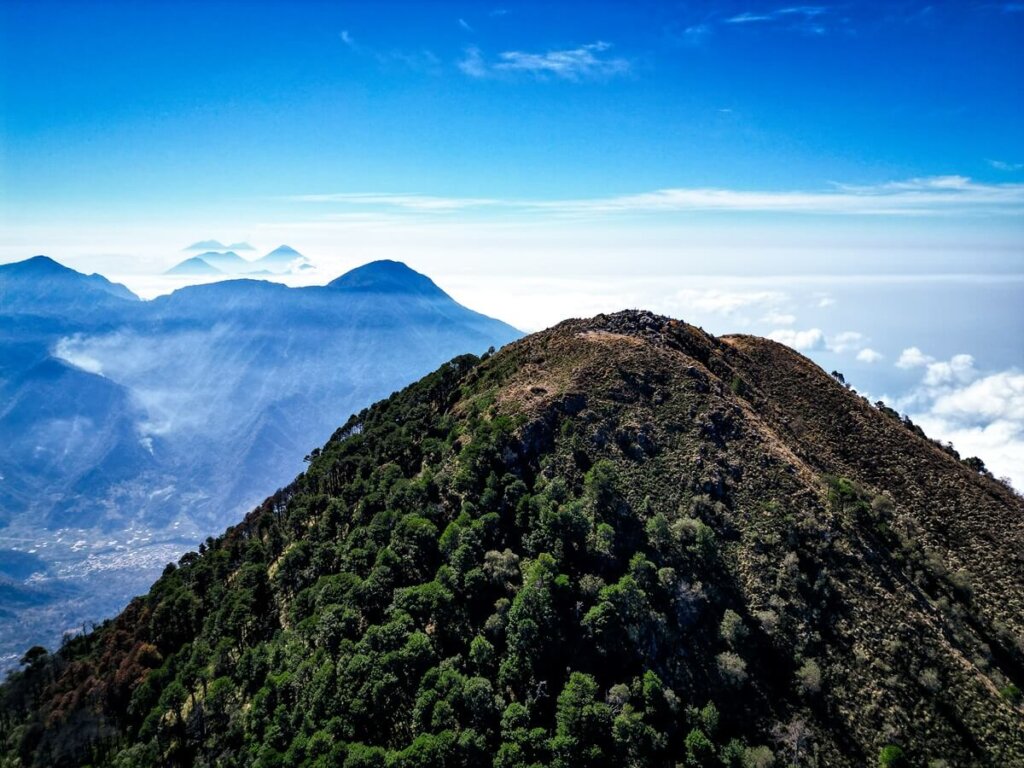
About Volcan Santa Maria
Santa Maria Volcano is located in the western highlands of Guatemala, just outside the city of Quetzaltenango, more commonly known as Xela. Santa Maria is one of the 37 official volcanoes in Guatemala. It’s an over 30,000 year old stratovolcano which last erupted in 1902. This eruption was one of the largest recorded in the 20th century. The eruption killed thousands of people, and apparently ash was detected as far away as San Francisco in the USA.
In 1922, a dome started growing on Santa Maria that has now become a separate volcanic cone called Santiaguito. Today, Santiaguito is one of the three active volcanoes in Guatemala along with Pacaya and Fuego near Antigua. The volcano causes numerous volcanic hazards to the nearby towns of El Palmar, San Felipe and even Xela. Whilst you can summit Volcan Santa Maria, you’re not allowed to go up Santiaguito for obvious reasons. However, you can either see it erupting from the top of Santa Maria, or from Mirador Santiaguito on the side of Santa Maria.
Practical Information Before Hiking Volcan Santa Maria
Hiking Route Map
Santa Maria Volcano Hike Stats:
- Trail length: 8.2 km / 5 miles (out-and-back)
- Trailhead: Llano de Pinal (2,465 m / 8,087 ft)
- Summit of Santa Maria: 3,772 m / 12,375 ft
- Elevation Gain: 1,220 m / 4,000 ft
- Level of Difficulty: Hard
Length of the Santa Maria Volcano Hike
The Santa Maria Volcano hike is an 8.2 km (5 miles) out-and-back trail. The trailhead starts in Llano de Pinal, a small town located a short drive to the southwest of Xela.
Normally, the ascent should take anywhere between 3 to 4 hours, depending on your level of fitness. The average time is around 3.5 hours, which is how long it took us to get up there. Considering it was our first high altitude hike since Peru and Ecuador, we were pretty happy with that time. Not to mention that I was having a stomach bug, which made the hike even more difficult for me personally. (P.S. I don’t recommend hiking a volcano with a stomach bug!)
The descent is normally quicker and should only take between 1.5 to 2 hours. We arrived back down to Llano de Pinal within 1 hour 45 minutes of leaving the summit, including a few well-needed breaks for our knees. If you have bad knees, or are generally slower on the downhills, then perhaps add some extra time for that.

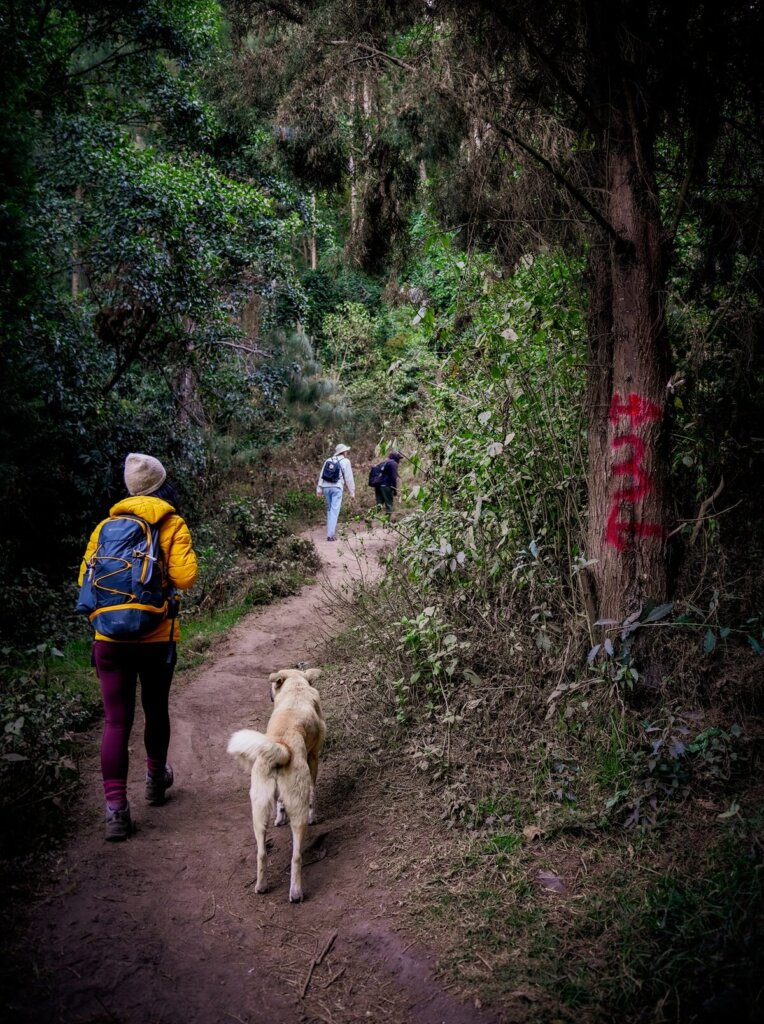
Level of Difficulty of the Santa Maria Volcano Hike
Hiking Volcan Santa Maria is considered a strenuous hike and we can confirm that it isn’t a walk in the park. Hiking the 5-day Salkantay Trek in Peru didn’t feel as difficult, even though the highest point of that trek was an extra 1,000 m / 3,280 ft above the summit of Santa Maria.
Whilst the length of the trail is short, the main difficulty for us came from the elevation gain. We’ll discuss below all the challenges you can face on this route, so make sure to be realistic about your abilities and don’t underestimate this hike.
Altitude
The highest point along the hike will be at the summit of Santa Maria at 3,772 m / 12,375 ft above sea level. This means that you can get altitude sickness if you haven’t acclimatised properly before attempting this hike. There are many symptoms of altitude sickness, including dehydration, dizziness, headaches, shortness of breath, heavy breathing, loss of appetite, nausea and vomiting. It’s good to remember that anyone can develop altitude sickness and its symptoms can be less or more severe depending on the person.
For this reason, we recommend spending at least one full day in Xela to get used to the higher elevation. We also suggest going on an acclimatisation hike to Laguna Chicabal which is only 2,712m above sea level. Alternatively, you can also just complete the Santiaguito Mirador hike where the maximum altitude is 2,790 m.
Elevation Gain
Apart from the altitude, you should also be aware of the elevation gain when hiking Volcan Santa Maria. The trailhead is located at 2,465 m / 8,087 ft above sea level. This means that you’ll be gaining around 1,220 m / 4,000 ft of elevation. Now, if you’ve hiked a cone shaped volcano before, then it won’t come as a surprise to you that you’ll be gaining this pretty quickly due to the steepness. Then, of course, you’ll also have to come back down the exact same way, so you’ll have to descend 1,220 m / 4,000 ft too.
The last time we had to gain so much elevation in such a short amount of time was on the last morning of our 3-day trek in the Colca Canyon in Peru, and even then it was ‘only’ about 1,000 m / 3280 ft.
Temperatures and Weather Conditions
If the altitude and elevation gain weren’t enough to deal with, you’ll also have to be mindful of the temperatures when trekking too. The sun can be pretty intense, especially in the dry season. Luckily, there are trees that offer shade, but it’s still important to wear a hat, sunglasses and sun-cream. Even though I wore SPF 50+ I still managed to get sunburnt.
If you’re here in the wet season, then you need to be mindful of the amount of rain that’s fallen before attempting this trail.
Trail Conditions
The trail basically consists of switchbacks that get steeper as you climb higher. There are also a ton of rocks and tree-roots that form natural steps. This made the trail feel a little like we were climbing an endless staircase, so we got some pretty intense thigh and calf burn.
It’s also very dusty, which we inevitably inhaled, especially on our way down. Let’s just say, wearing contact lenses wasn’t pleasant either. In addition, descending can be pretty slippery thanks to all the loose rocks. It’s so easy to step on one and twist your ankle. On our way down we saw mountain rescue hiking up with a stretcher to bring a hiker down who had twisted her ankle.
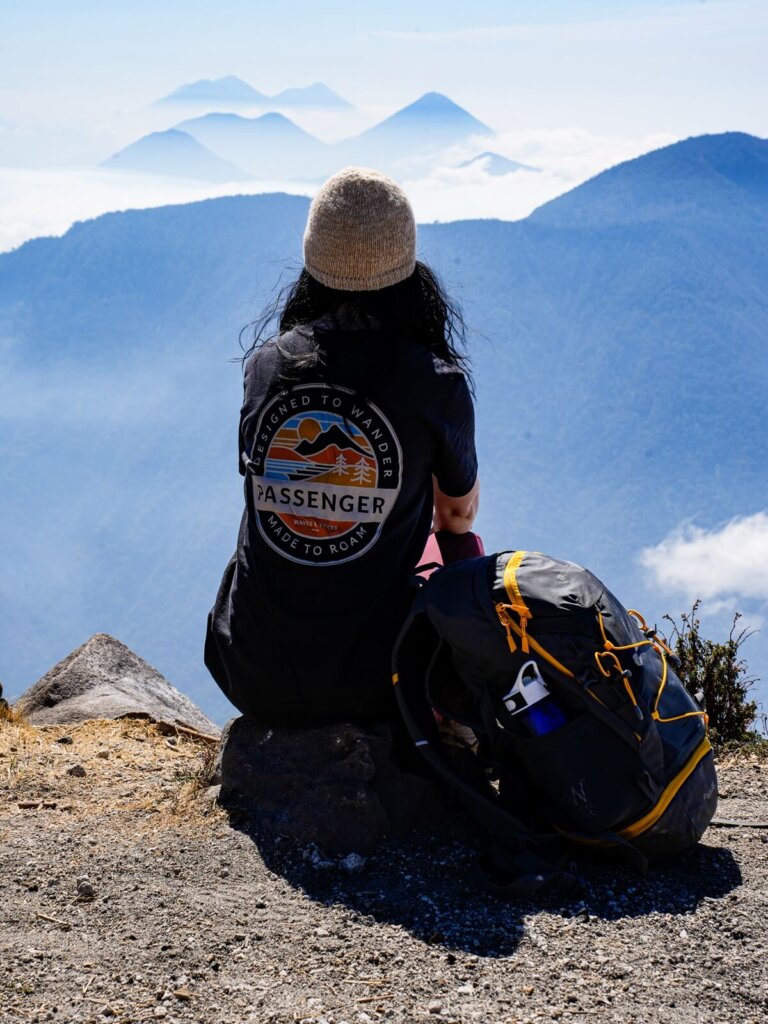
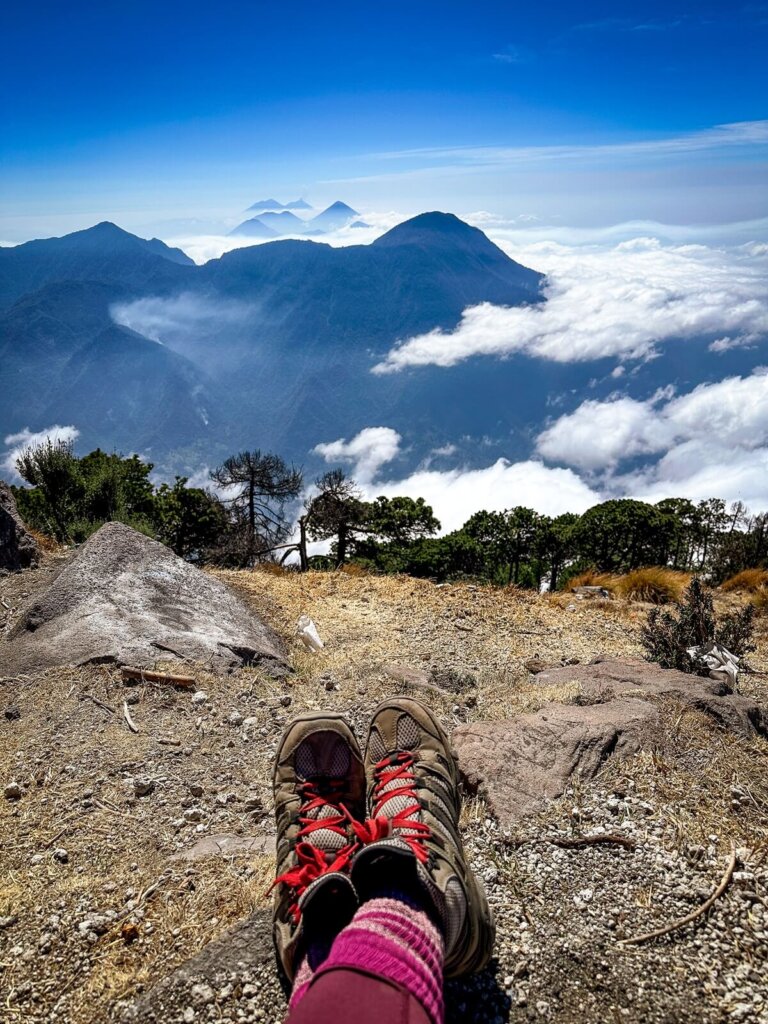
What to Wear and Bring with You
We highly recommend wearing outdoor and weather appropriate clothing when going on the Santa Maria Volcano hike. It can be a bit chilly in the morning, however in the dry season the temperatures will increase quickly. Therefore, make sure to wear layers so you can adjust to the conditions. You can wear either shorts or long trousers depending on what you feel more comfortable in. We still suggest taking a fleece and / or a rain jacket, as it might be a bit cooler at the top.
In terms of footwear, you should wear hiking boots or shoes with good grip. We personally like wearing boots for their extra ankle support, which comes in handy on the way down.
You might have to hike in the dark for the first 15-20 minutes, so bring a headlamp if you want.
Also, make sure to have enough SPF on you as the sun can be pretty strong. Take a hat and sunglasses for extra protection as well. As we mentioned before, the trail is very dusty, so you may want to wear a bandana to cover your mouth and nose. It was worse on the way down, especially with our faithful companion dog running all around us.
The descent can be pretty hard on the knees, so you might want to use poles on the way down.
Most importantly, make sure to have plenty of drinking water because you’ll be drinking a lot on the way up. Staying hydrated is also important to avoid altitude sickness. Having some snacks or a packed lunch is a good idea to help re-fuel your body. We normally drink some electrolytes or rehydration drinks after such a demanding hike.
Have some cash on you for any emergencies, but don’t carry too much.
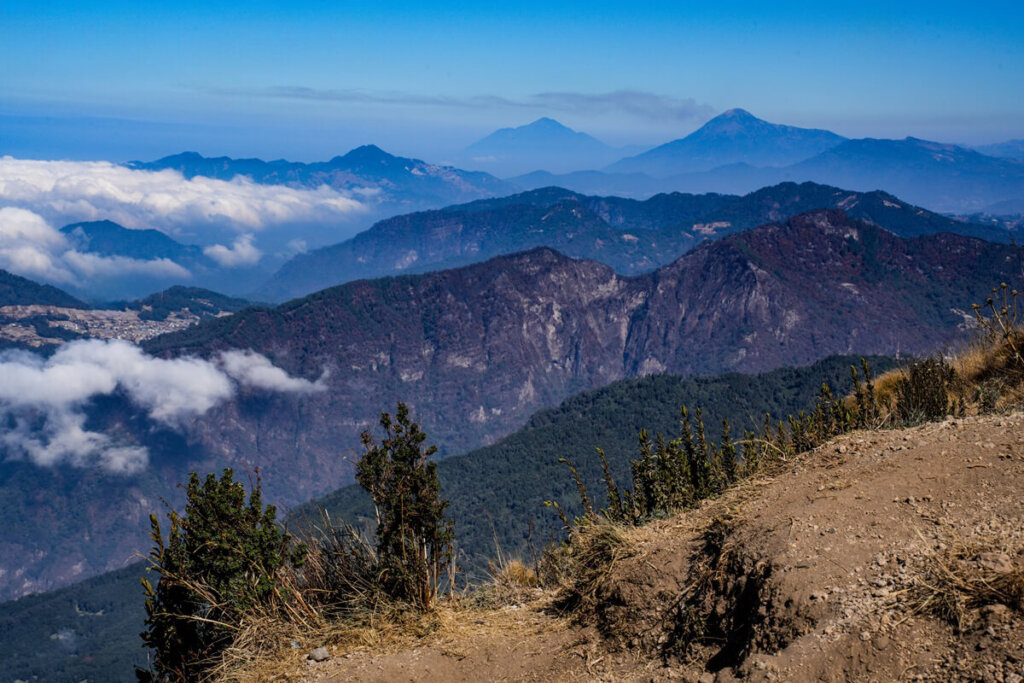
Best Time to Hike Volcan Santa Maria
You can technically hike Volcan Santa Maria all year round. Of course, the best time would be during the dry season, which in Guatemala is from November to April. This doesn’t mean that you can’t hike in the rainy season, but make sure to check the forecast. Normally, the mornings are fine with some heavy rain in the afternoon.
In terms of time of day, we recommend going earlier rather than later for a few reasons. Firstly, the clouds can roll in by mid to late morning. This means that you might not get clear views at the top, and Santiaguito will most likely be in the clouds. Another reason for starting early is that the temperatures will be a bit more pleasant, especially going uphill. Lastly, more people head up in the morning, and it’s always a bit safer to hike with others around you.
If you go independently, then you’ll most likely be doing it early to mid morning, after sunrise. If you’re going with a tour, some companies offer a sunrise or early morning hike. The sunrise hike means that you’d be watching the sunrise at the summit. The early morning hike starts around 5AM, so you’ll experience the sunrise during your hike. We’ll discuss the pros and cons of a tour vs an independent hike below.
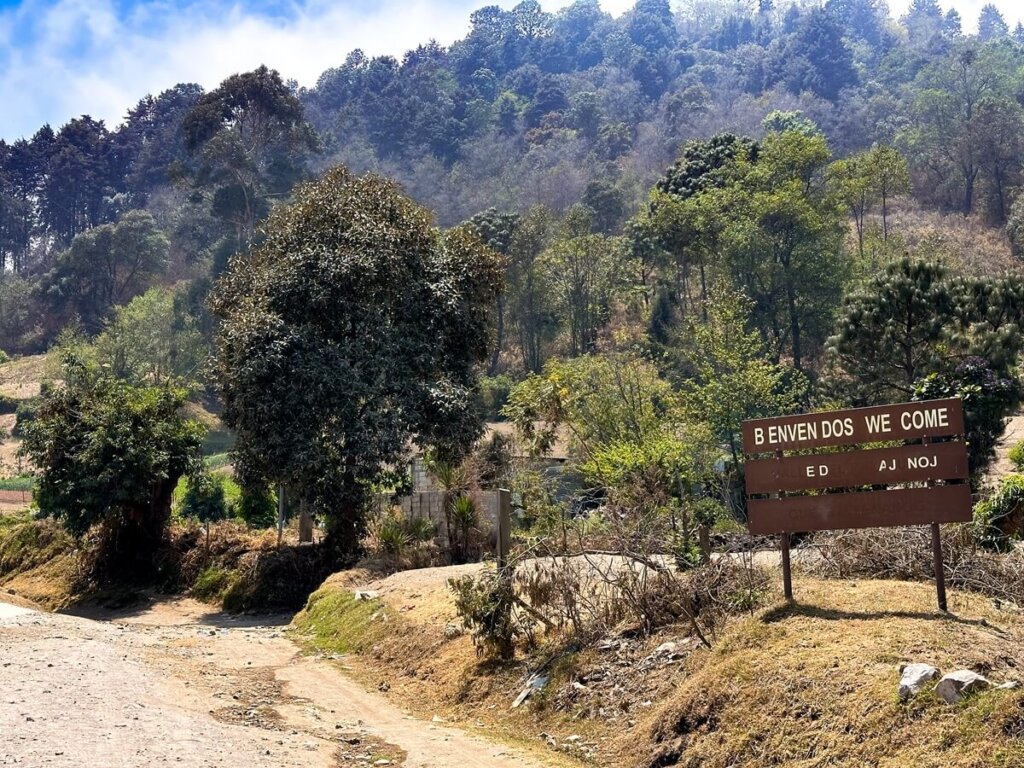
Should You Hike Santa Maria Volcano with a Guide or Independently
An important question you might have when planning to hike Santa Maria, or anywhere in Guatemala, is whether it’s safe to do it on your own or whether you should go with a guide. Based on our research, and reading a ton of recent reviews, it’s generally safe to do this hike independently. However, as always, what might feel safe for us may not feel safe for you. We personally wouldn’t go on this hike solo, as we are always mindful of how much camera gear we carry.
There are pros and cons to visiting with a tour or independently, so let’s run through them.
Pros of Taking a Tour:
- You can start your hike early and be on the top before the clouds roll in. This will give you a higher chance of seeing Santiaguito.
- Hiking independently in Guatemala is sometimes a bit risky, as unfortunately robberies can happen along these trails. We do carry a lot of expensive camera equipment, so going with a guide gave us peace of mind.
- If your Spanish skills aren’t the best, then having a guide can come in handy should anything happen.
- A guide can tell you more about the volcano and the area.
- If you go with the right company, your money will be put towards good causes.
Cons of Taking a Tour:
- You’ll be dependent on the timings of the guides. Whilst they do adjust their pace, they also want you up and down in a certain timeframe. You may want to linger a bit longer on the top, or take more breaks, so you may feel a bit rushed at times. Or the opposite might happen, and you feel like others in the group are slowing you down.
- Depending on the company you go with, the guide may not speak much English. If you don’t speak Spanish, then you probably won’t feel like you’ve gotten much out of a guided hike experience.
- It’s definitely more expensive than taking public transport.
Pros of an Independent Hike:
- You’ll definitely have a more adventurous day by travelling on chicken buses.
- You can set your own pace and won’t have to wait for slower hikers or be rushed by the guides.
- It’s definitely more cost-effective than a tour.
Cons of an Independent Hike:
- Whilst safety has improved, you’ll always run a greater risk of something happening when hiking on your own.
- You won’t be able to get to the trailhead early enough unless you get an Uber. However, we still don’t recommend getting one too early for safety reasons. This means that you’ll run the risk of reaching the summit later and the views might be gone by then.
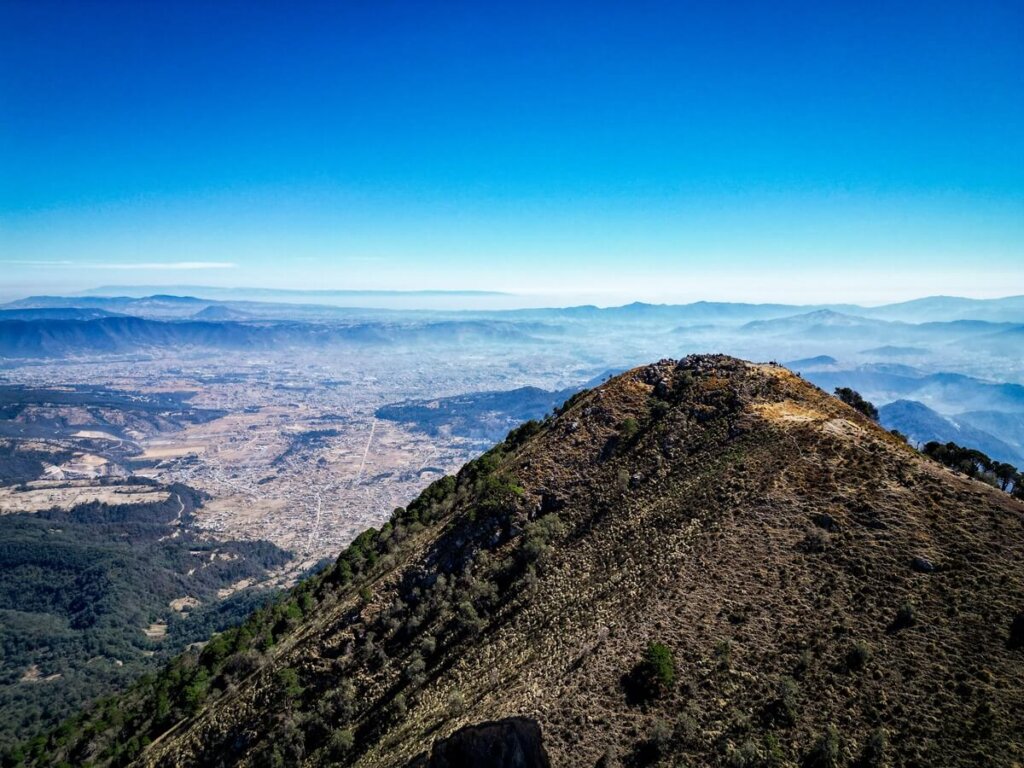
Best Tour Companies for Hiking Santa Maria Volcano
Below are a few tour companies to consider if you want to hike Santa Maria with a tour:
- Quetzaltrekkers is a non-profit organisation led by awesome volunteer guides. They use the money to provide education, housing and other social support to disadvantaged children in Xela. We did the 2-day Zunil hike with them and loved the experience.
- Monte Verde Tours is the company we ended up doing the hike with. They also offer private and shared shuttle services between popular locations in Guatemala.
- Adrenalina Tours also offer an early morning guided hike up Santa Maria. They also have shuttle services within the country, and operate in neighbouring countries such as Belize as well.
- Voyageur Tours offer a Santa Maria Full Moon hiking experience. They also offer transportation services within the country.
Do you Need Special Travel Insurance to Hike Santa Maria Volcano
We cannot emphasize enough how important it is to have travel insurance before any trip you make abroad. Now, most travel insurance won’t automatically include cover for all the activities you’re planning on doing during your travels.
For example, if you’re visiting Guatemala, and planning on hiking at high altitudes, then you should make sure to have cover for high altitude trekking in your insurance policy. Shop around to find the most suitable one. You just never know what could happen, and it’s better to be safe than sorry.
We personally use SafetyWing which covers trekking under 4,500m as standard and has an Adventure Sport add-on, which will then cover you up to 6,000m of elevation.
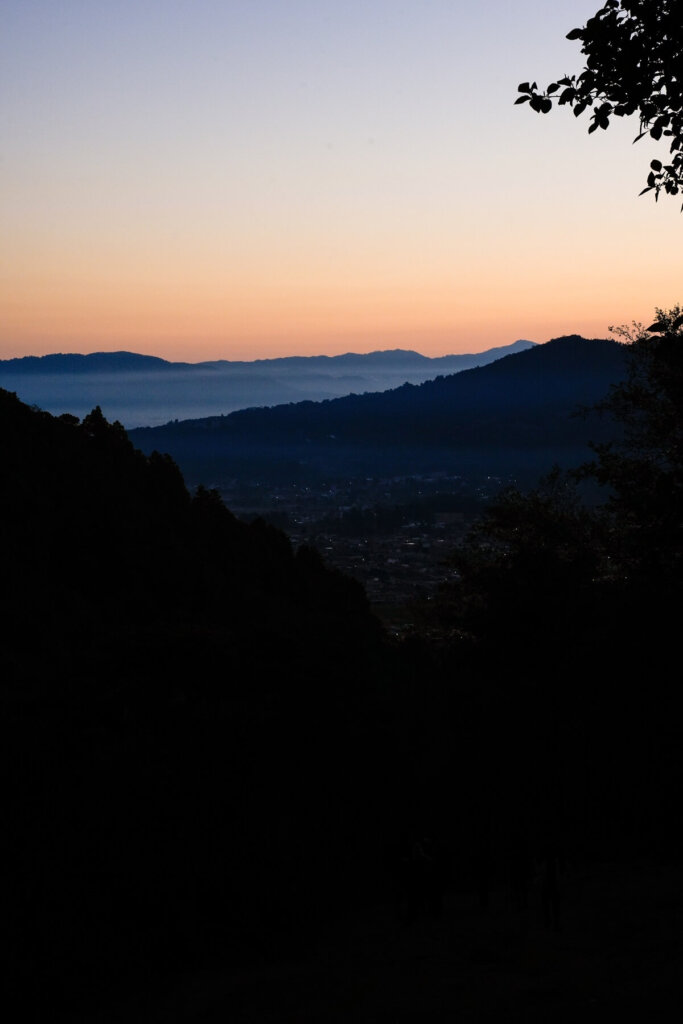
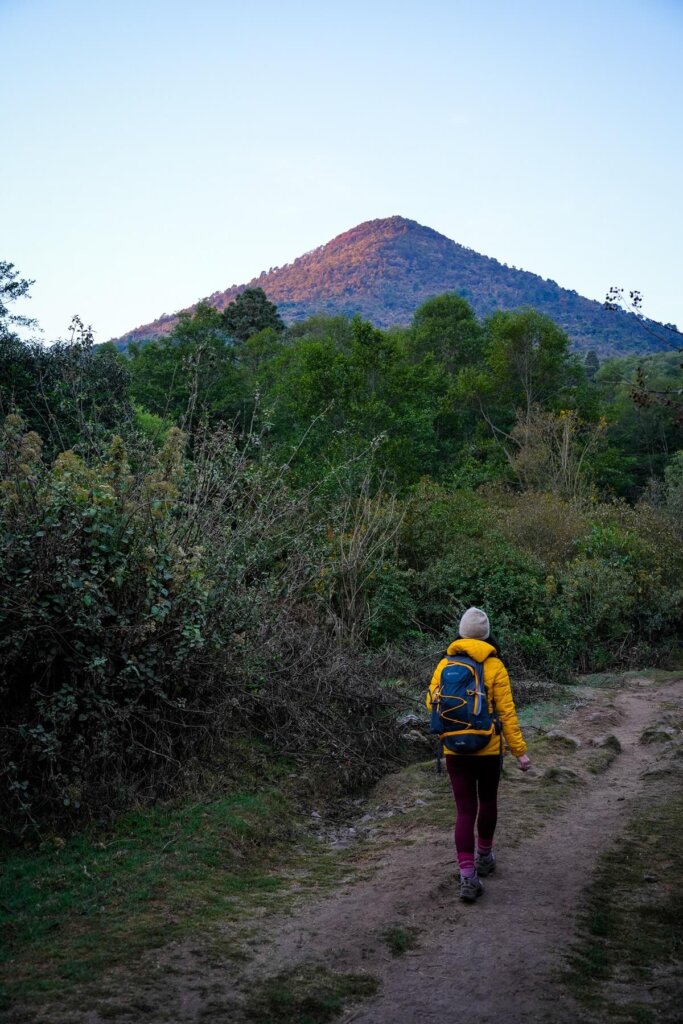
Volcan Santa Maria Hiking Trail
If you’re completing the hike independently, we recommend getting to the trailhead with an Uber. The first chicken bus to Llano de Pinal won’t depart until about 6AM. If you’ve been travelling around Latin America, then you know that everything is a bit slower and there’s no set timetable, so the journey might take longer than it should. With an Uber, you can get to the trailhead nice and early. However, we suggest departing not much later than 5:30AM. If you’re on an early morning tour, then they normally pick you up around 5AM and start the hike around 5:30AM.
1. From the Trailhead to the Switchbacks via Farmland
The trail starts about here on Google Maps. Luckily, the first part of the hike is relatively ‘flat’, aka ‘Guatemalan flat’, with a pretty gradual incline. You’ll be walking through farmland. We hiked this section in the dark, with the sun rising just behind us. The morning light on Santa Maria in front of us was really beautiful. A few dogs also joined us at the start and hiked all the way to the summit and back with us. That’s quite common in Latin America, so you may want to bring some extra food to give to your four-legged companion.
The trail is easy to follow, but bear in mind that this first section is shared with the path that goes to Mirador Santiaguito. You’ll soon get to a fork in the path right next to a farm. Straight ahead / slightly right will be towards the Santiaguito viewpoint. You’ll need to go left here to summit Santa Maria. The path starts to get steeper here too, which is an indication that you’re going the right way. Soon we passed a big sign with ‘RESTRICCIONES’ written on it, that details what you should and shouldn’t do, or carry, on this hike. If you haven’t seen this board, that means that you’re en-route to Mirador Santiaguito. This was actually the first point where we really noticed the amount of litter on this trail. Unfortunately the situation didn’t get much better.
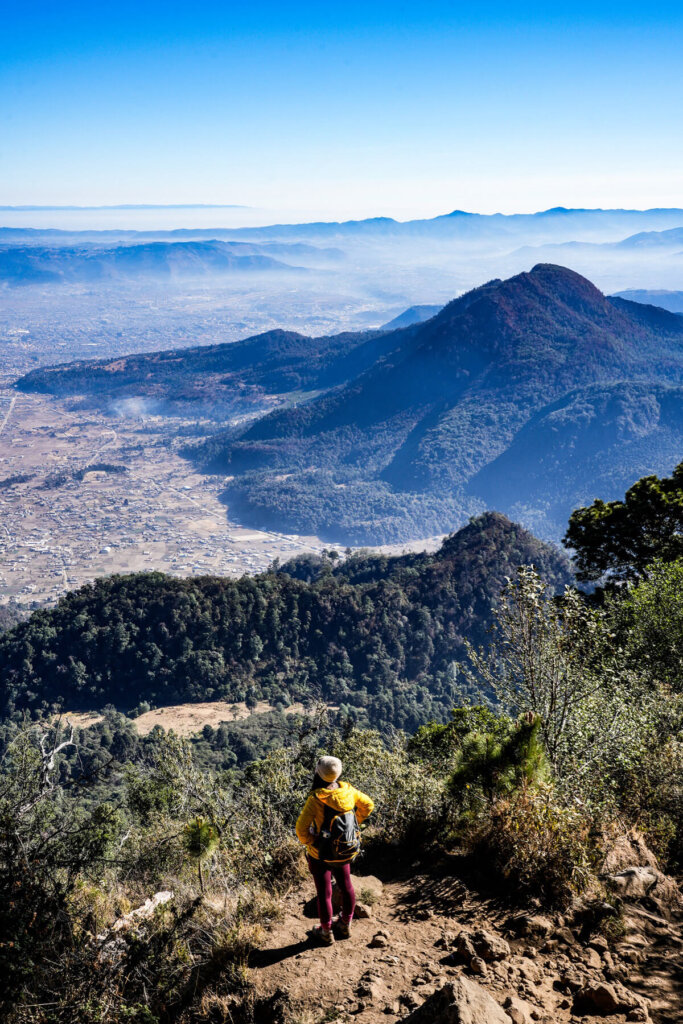
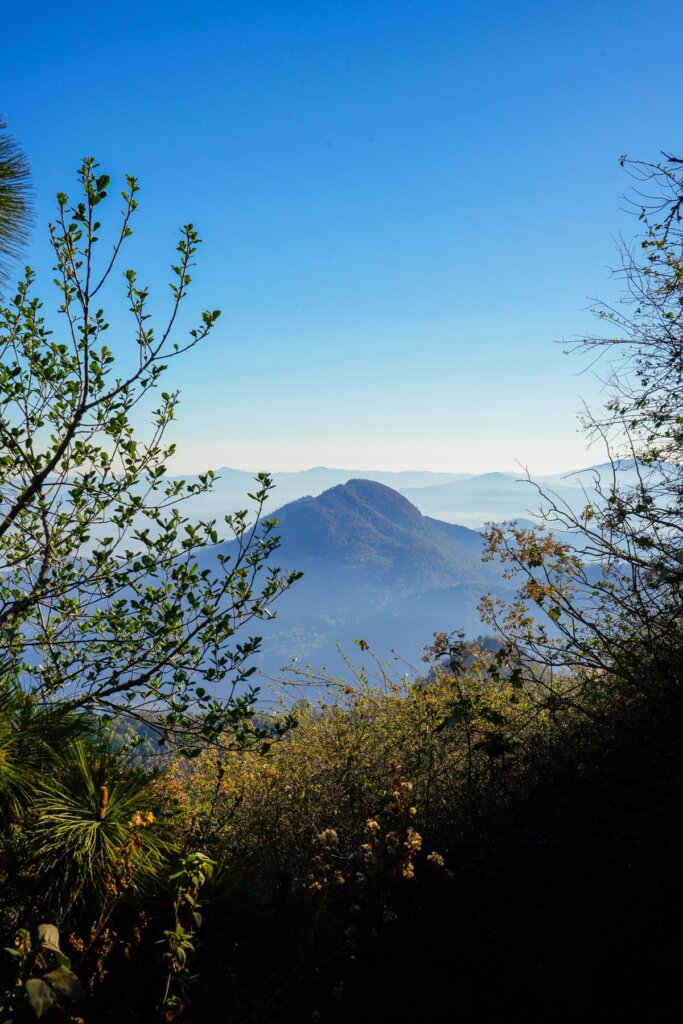
2. Switchbacks to the Summit
At the sign, you need to go right and up. There were a few red arrows here and there indicating the direction but there wasn’t much else confirming that we were on the right path.
The main clue was that the path started to get steeper and steeper. From here, we were mainly hiking through pine forest, and there is only one trail, so it’s hard to get lost. As we made our way higher, more gaps started appearing in the trees. This gave us some lovely views of Xela in front of us. We even got to see Fuego erupting in the distance through the trees.
After hiking straight up for so long, it was beginning to feel like the trail would never end and that the summit was days away. The last 20 to 30 minutes were the worst because we really felt like we should have gotten to the top by then. Keep going and you will reach the summit just when you think you cannot possibly go any further.
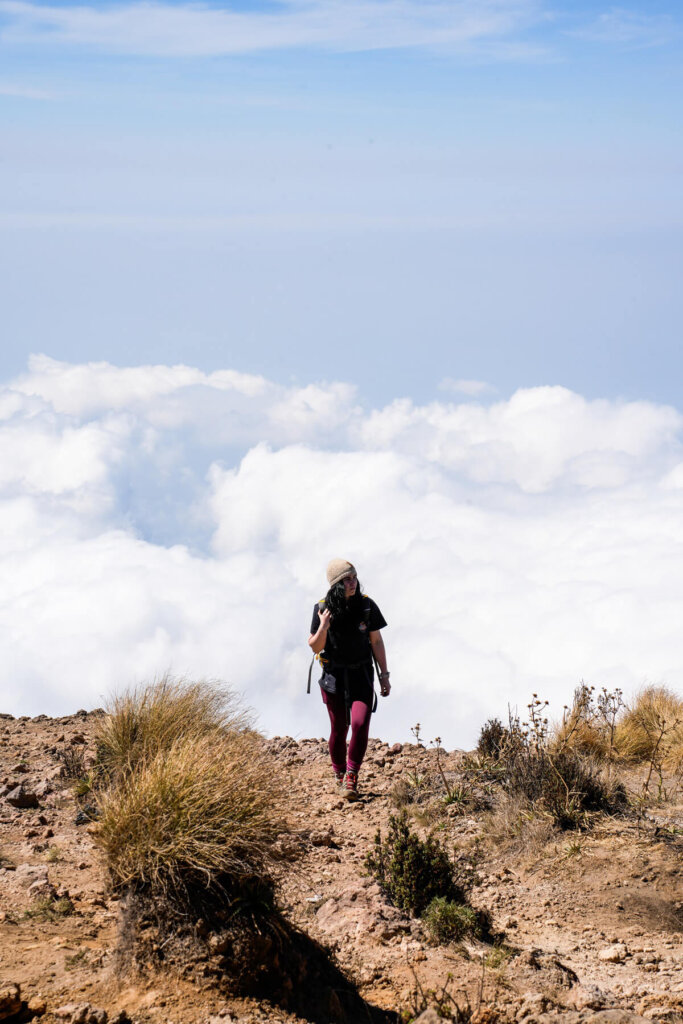
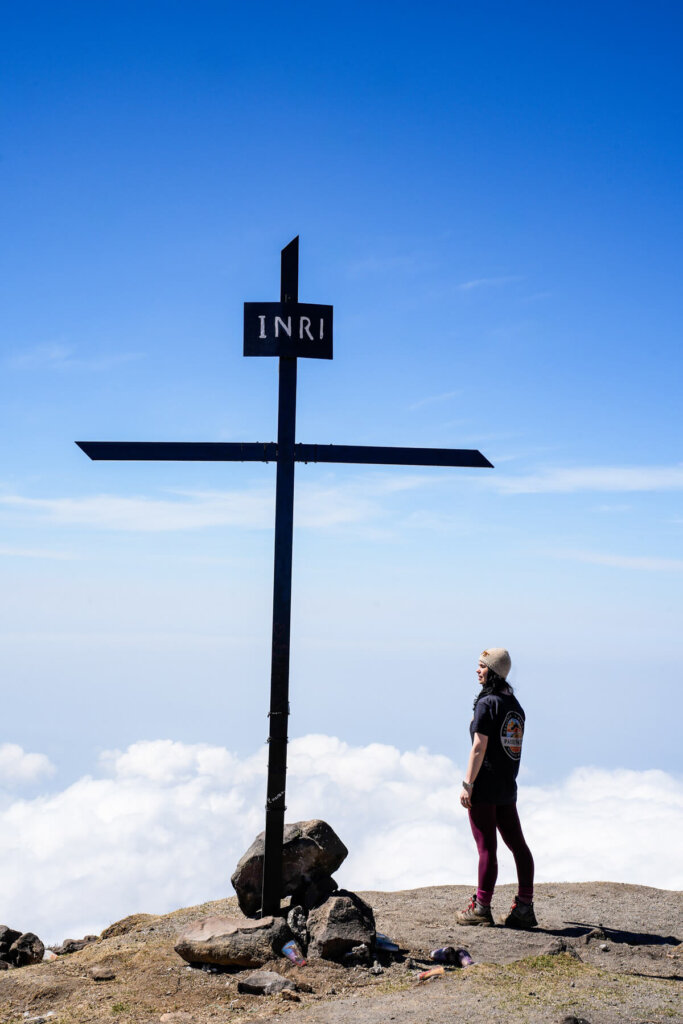
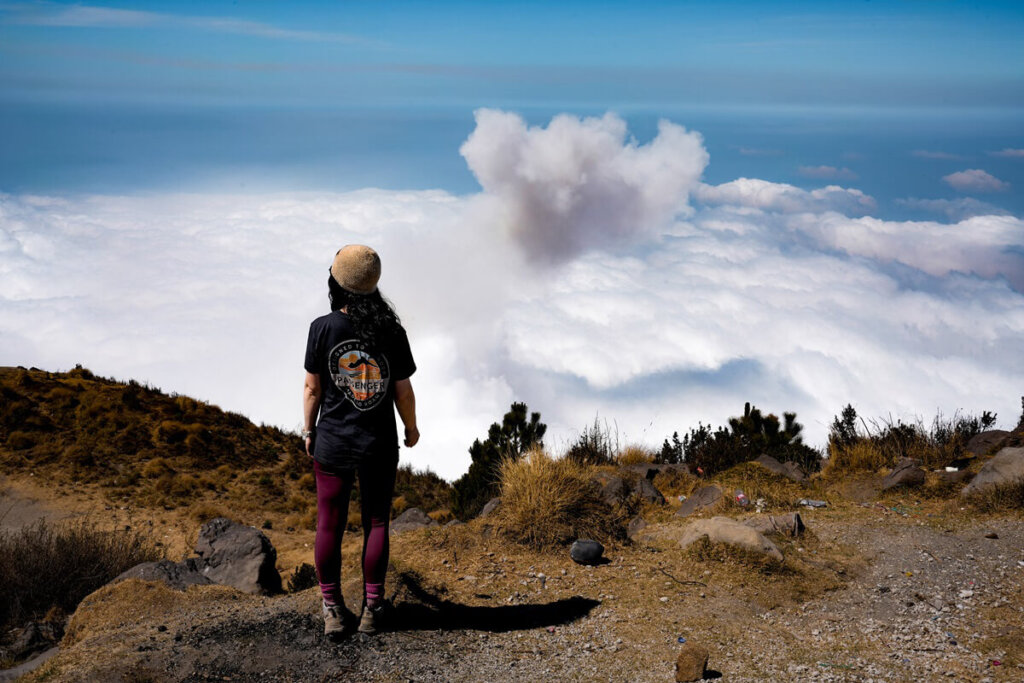
3. The Summit
After climbing up the last few stone ‘steps’, we reached the summit of Volcan Santa Maria. The top is quite a large area, which surprised us a little. We also saw quite a few flower offerings left there by locals. Unfortunately, there was a lot of litter, which ruined the beauty of this place somewhat.
However, the panoramic views made up for the sad state of the ground. From the top, if visibility is good, in one direction you’ll be able to see Volcan Tajumulco, the highest point in Central America, and Volcán Tacaná in Mexico. In the other direction, you can see Atitlan, San Pedro and Toliman around Lake Atitlan, and Fuego and Acatenango near Antigua.
You’ll need to walk a bit further down the other side of the summit to see Santiaguito. It may or may not be in the clouds, depending on the weather conditions. We saw it for only a few seconds before the clouds completely covered it.
Santiaguito erupts quite regurarly, so we recommend waiting around a bit to see at least one eruption. The smoke that comes out usually rises through the clouds, so you really can’t miss it.

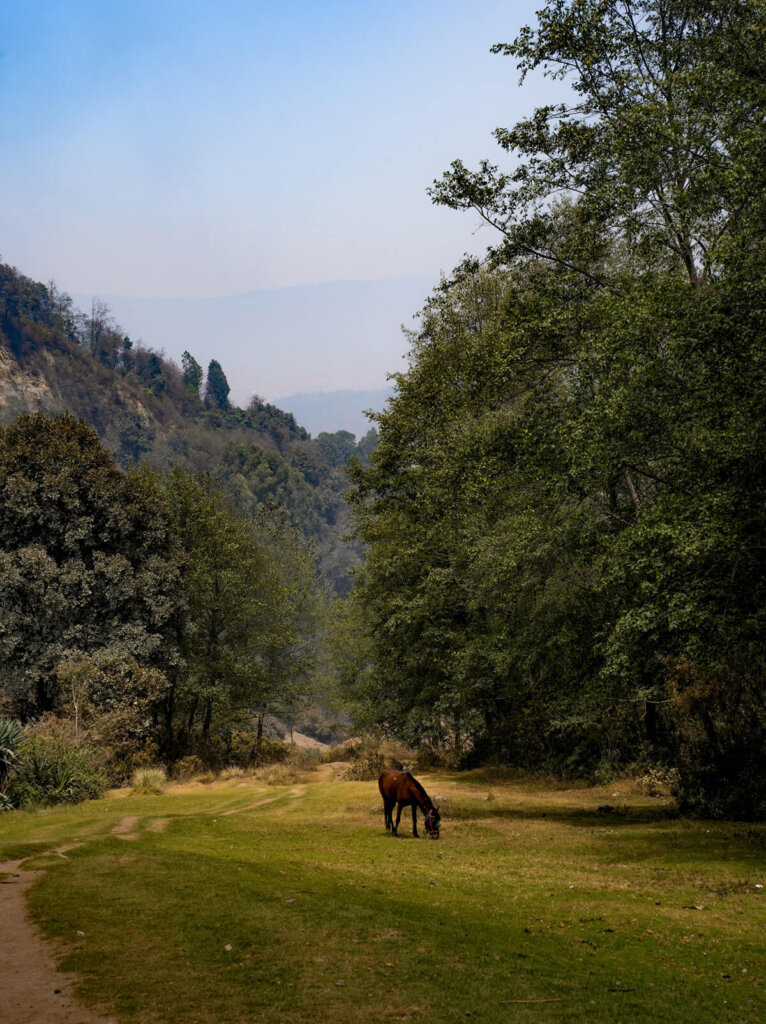
4. The Descent
Once you’ve recovered from the ascent, seen Santiaguito erupt, had a bite to eat and shared some with your furry companion, it’s time for the knee-breaking descent of Santa Maria.
You’ll follow the exact same route you came up on, so you shouldn’t get lost coming down. It will likely be much hotter by this time, and you’ll likely be a bit tired too. Therefore, make sure to pay even more attention to the trail. This is when you can easily lose you footing and twist an ankle. As mentioned before, we passed a hiker who had possibly twisted her ankle and mountain rescue were on their way up to her.
The way down will be pretty dusty too. Our loyal companion dog made the situation worse by running all around us, so we’d gotten very dirty by the end.
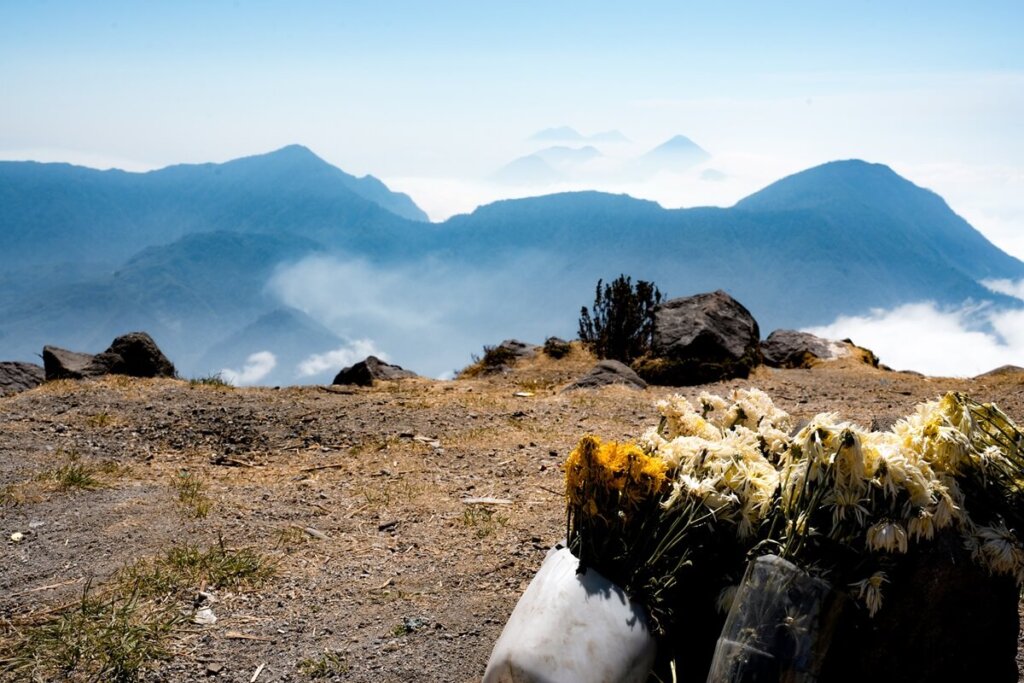
Additional Notes on Hiking Volcan Santa Maria
- We generally don’t recommend hiking Volcan Santa Maria if you don’t hike on a regular basis, or have never hiked up a volcano or been up to similar altitudes before. It’s a hard trek from start to finish. Whilst we don’t have personal experience hiking to Mirador Santiaguito, we think it is a much more manageable hike and you may even get a better view of Santiaguito from there.
- This was one of the most littered trails we’ve been on in Guatemala, and in Latin America. It’s definitely a multi-layered issue, from the lack of bins to all the different types of offerings being left behind and irresponsible campers. Make sure not to add to the problem and bring a bag with you to take everything back and dispose of it properly.
- There weren’t any toilets on the trail, and since we did the hike with a tour, we’re not sure if there were any in the town either.
- The trail is generally easy to follow, but it isn’t marked very well and there are a few instances where you could potentially take the wrong turn. Make sure to have AllTrails and other offline maps with you.
- It’s generally a safe hike, but we would still advise being cautious and not taking too many valuables with you if you attempt it independently. Plus, you’re hiking close to one of the three very active volcanoes in the country, so it’s always good to check the recent activity online.
Read Next:
Final Thoughts on Hiking Volcan Santa Maria, Xela, Guatemala
Santa Maria was our first volcano hike in Guatemala and, even after hiking many more volcanoes in the country, it still remains the hardest trek we did. I actually summited the volcano with a stomach bug, which made the hike even more difficult for me, but it also made me even more proud to have done it. Whilst Santiaguito was clouded over by the time we reached the top, we still managed to see it erupt. Luckily, we got some insane views of the surrounding volcanoes such as Tajumulco, Toliman, Atitlan, San Pedro and Fuego in the distance.
Have you ever hiked Volcan Santa Maria in Xela, Guatemala before? If so, how was your experience? If not, would you add this hike to your Xela itinerary? Let us know in the comments below.

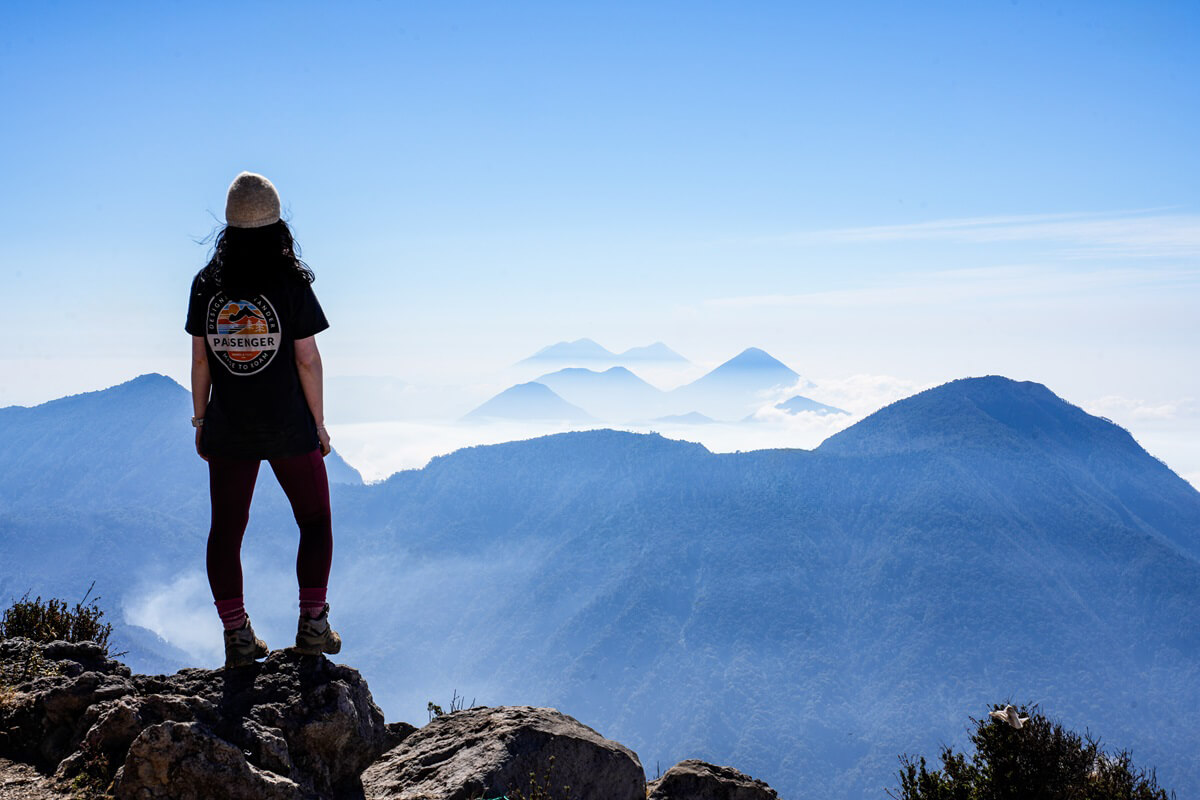


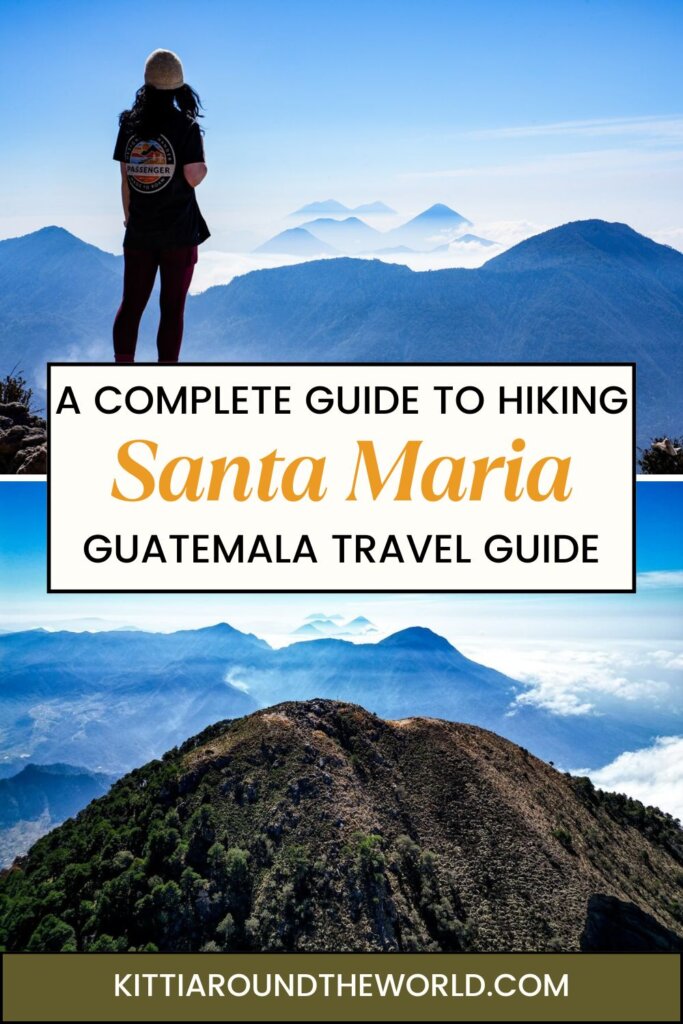

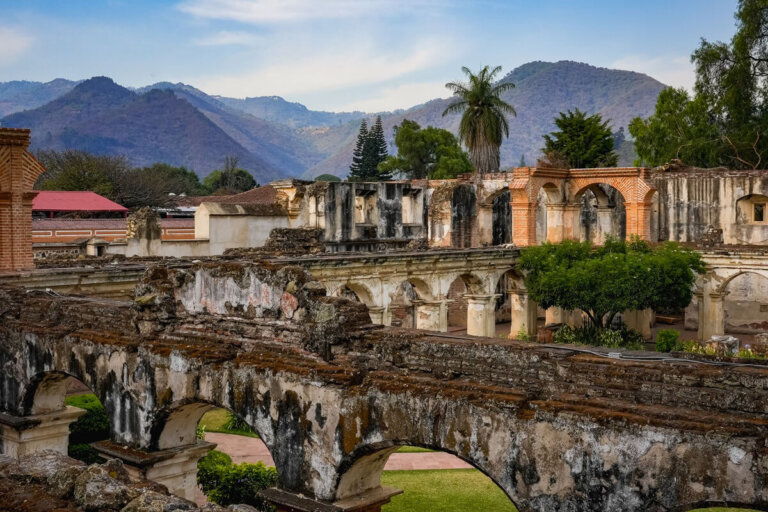
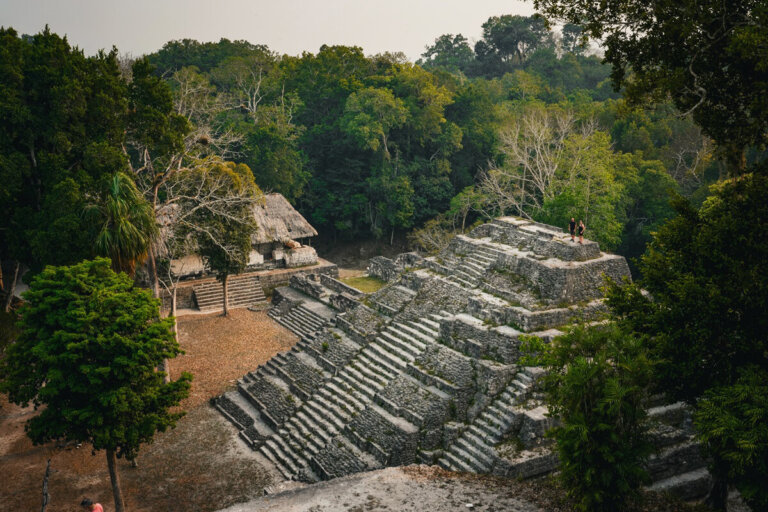
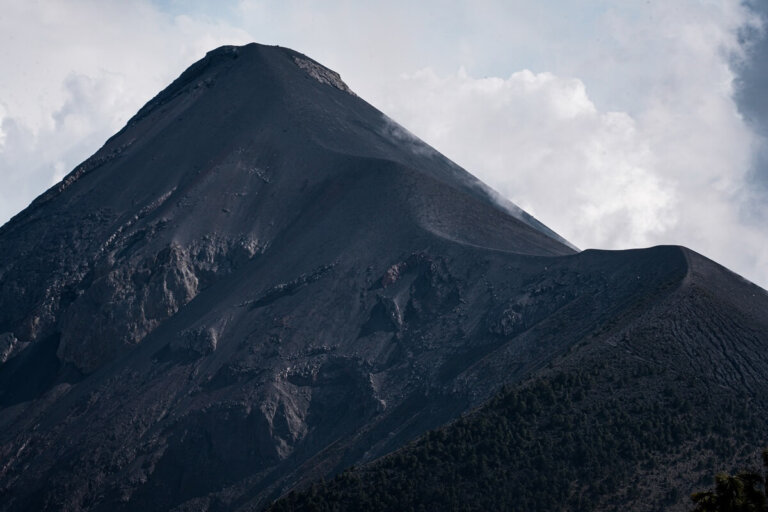

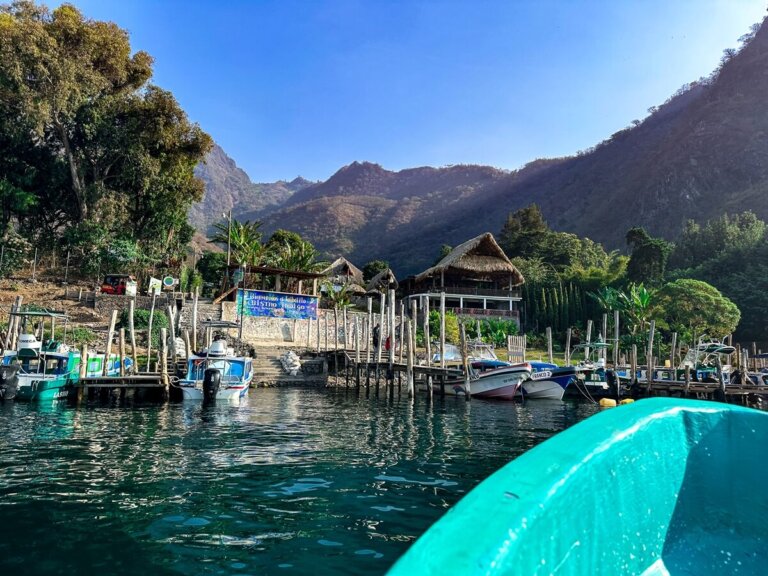
loved the blog Kitti😍
The photos from the top are lovely, especially the one of all the other volcanoes in the distance. Sounds like it was a tough hike, you give really good advice on how best to tackle it.
Thank you so much Karan, we’re so happy that you enjoyed reading about hiking Santa Maria. It’s definitely a hard one to summit, but worth all the effort for the views!